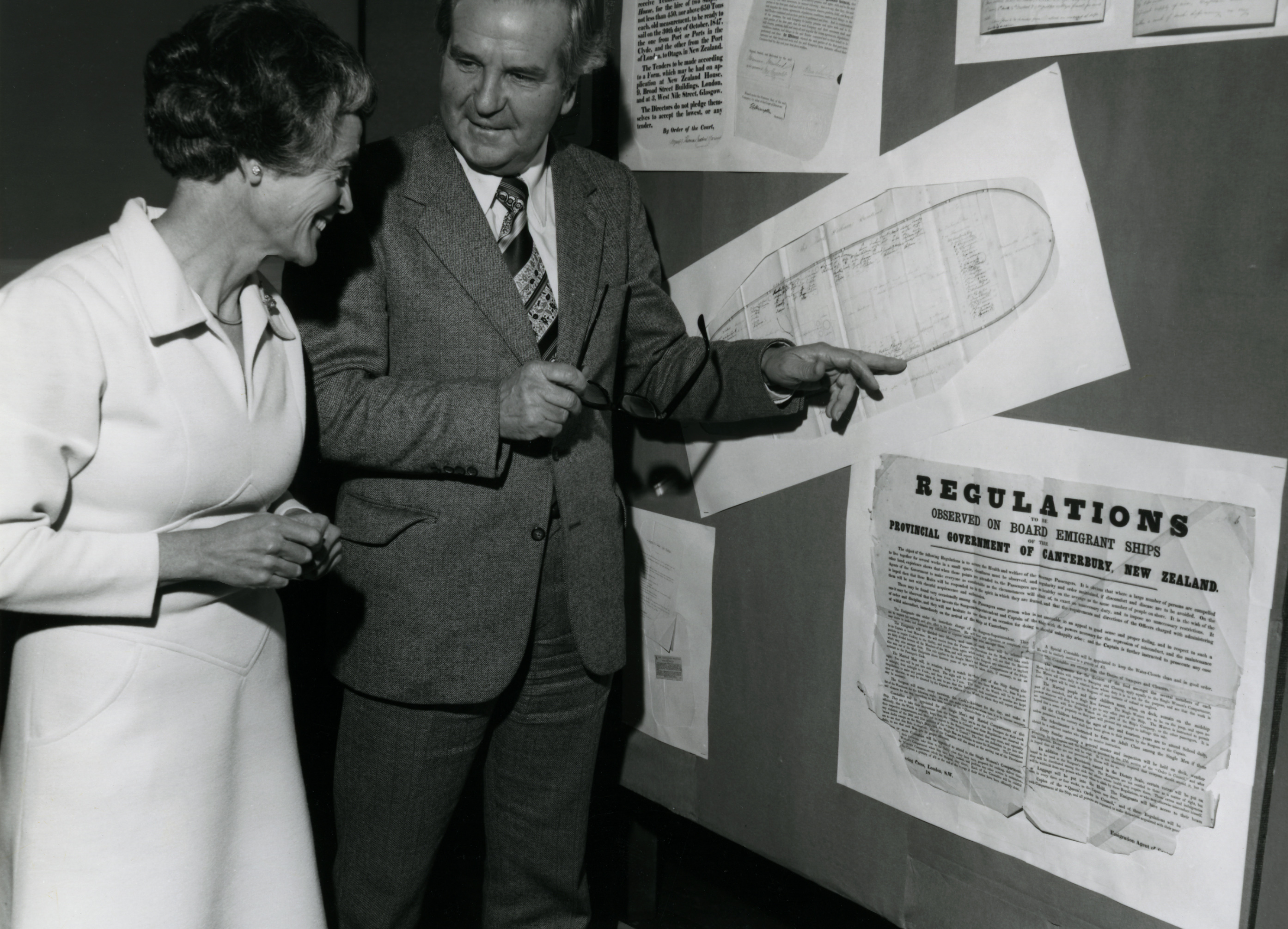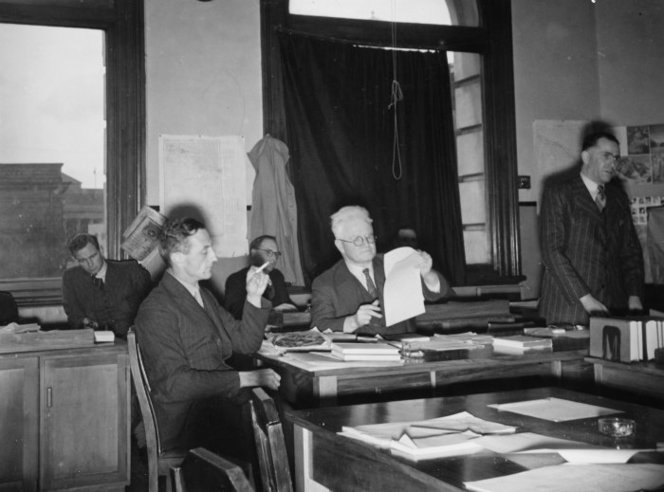|
Judith Hornabrook
Judith Sidney Hornabrook (26 October 1928 – 3 July 2011) was the Chief Archivist of New Zealand at the Archives New Zealand from 1972 until 1982. Career After World War II, Hornabrook earned a position with the New Zealand government in the War History Branch. She then joined the National Archives of New Zealand as a reference archivist. In 1973, Hornabrook was named Chief Archivist of New Zealand at the Archives New Zealand. She left the Archives New Zealand in 1982 to become the Chief Archivist in Papua New Guinea. Hornabrook published several works related to her professional knowledge and work in national archives. Hornabrook died on 3 July 2011. Selected bibliography * * * * * * * * * * References See also * Archives New Zealand Archives New Zealand (Māori: ''Te Rua Mahara o te Kāwanatanga'') is New Zealand's national archive and the official guardian of its public archives. As the government's recordkeeping authority, it administers the Publi ... [...More Info...] [...Related Items...] OR: [Wikipedia] [Google] [Baidu] |
Archives New Zealand
Archives New Zealand (Māori: ''Te Rua Mahara o te Kāwanatanga'') is New Zealand's national archive and the official guardian of its public archives. As the government's recordkeeping authority, it administers the Public Records Act 2005 and promotes good information management throughout government. History Establishment In 1954, the First National Government's cabinet approved the establishment of a national archive and the office of a chief archivist, and the drafting of enabling legislation. The Archives Act 1957 established the National Archives within the Department of Internal Affairs (DIA). It also gave the chief archivist the power to approve the disposal of official records and to require the transfer of records to the National Archives after 25 years. The Archives Act also affirmed public access to the National Archives. While the National Archives were established in 1957, they were preceded by the Dominion Archives and the former war archives at the Hope Gibbon ... [...More Info...] [...Related Items...] OR: [Wikipedia] [Google] [Baidu] |
Official History Of New Zealand In The Second World War 1939–45
The ''Official History of New Zealand in the Second World War 1939–45'' is a 48-volume series published by the War History Branch (and its successors) of the Department of Internal Affairs which covered New Zealand involvement in the Second World War. The series was published during the period 1949 to 1986. A collection of booklets entitled ''Episodes and Studies'' were also published between 1948 and 1954. The ''Official History of New Zealand in the Second World War 1939–45'' was the largest publication project undertaken in New Zealand. Background It had long been felt in New Zealand that the four-volume 'popular' history of the New Zealand Expeditionary Force, the ''Official History of New Zealand's Effort in the Great War'' which had been published a few years after the First World War ended, had not matched the standard set by the ''Official History of Australia in the War of 1914–1918'', edited by Charles Bean. In 1940, with a view to the production of an official ... [...More Info...] [...Related Items...] OR: [Wikipedia] [Google] [Baidu] |
National Archives Of New Zealand
Archives New Zealand (Māori: ''Te Rua Mahara o te Kāwanatanga'') is New Zealand's national archive and the official guardian of its public archives. As the government's recordkeeping authority, it administers the Public Records Act 2005 and promotes good information management throughout government. History Establishment In 1954, the First National Government's cabinet approved the establishment of a national archive and the office of a chief archivist, and the drafting of enabling legislation. The Archives Act 1957 established the National Archives within the Department of Internal Affairs (DIA). It also gave the chief archivist the power to approve the disposal of official records and to require the transfer of records to the National Archives after 25 years. The Archives Act also affirmed public access to the National Archives. While the National Archives were established in 1957, they were preceded by the Dominion Archives and the former war archives at the Hope Gibbon ... [...More Info...] [...Related Items...] OR: [Wikipedia] [Google] [Baidu] |
Papua New Guinea
Papua New Guinea (abbreviated PNG; , ; tpi, Papua Niugini; ho, Papua Niu Gini), officially the Independent State of Papua New Guinea ( tpi, Independen Stet bilong Papua Niugini; ho, Independen Stet bilong Papua Niu Gini), is a country in Oceania that comprises the eastern half of the island of New Guinea and its offshore islands in Melanesia (a region of the southwestern Pacific Ocean north of Australia). Its capital, located along its southeastern coast, is Port Moresby. The country is the world's third largest island country, with an area of . At the national level, after being ruled by three external powers since 1884, including nearly 60 years of Australian administration starting during World War I, Papua New Guinea established its sovereignty in 1975. It became an independent Commonwealth realm in 1975 with Elizabeth II as its queen. It also became a member of the Commonwealth of Nations in its own right. There are 839 known languages of Papua New Guinea, one of ... [...More Info...] [...Related Items...] OR: [Wikipedia] [Google] [Baidu] |
Judith Hornabrook
Judith Sidney Hornabrook (26 October 1928 – 3 July 2011) was the Chief Archivist of New Zealand at the Archives New Zealand from 1972 until 1982. Career After World War II, Hornabrook earned a position with the New Zealand government in the War History Branch. She then joined the National Archives of New Zealand as a reference archivist. In 1973, Hornabrook was named Chief Archivist of New Zealand at the Archives New Zealand. She left the Archives New Zealand in 1982 to become the Chief Archivist in Papua New Guinea. Hornabrook published several works related to her professional knowledge and work in national archives. Hornabrook died on 3 July 2011. Selected bibliography * * * * * * * * * * References See also * Archives New Zealand Archives New Zealand (Māori: ''Te Rua Mahara o te Kāwanatanga'') is New Zealand's national archive and the official guardian of its public archives. As the government's recordkeeping authority, it administers the Publi ... [...More Info...] [...Related Items...] OR: [Wikipedia] [Google] [Baidu] |
1928 Births
Nineteen or 19 may refer to: * 19 (number), the natural number following 18 and preceding 20 * one of the years 19 BC, AD 19, 1919, 2019 Films * ''19'' (film), a 2001 Japanese film * ''Nineteen'' (film), a 1987 science fiction film Music * 19 (band), a Japanese pop music duo Albums * ''19'' (Adele album), 2008 * ''19'', a 2003 album by Alsou * ''19'', a 2006 album by Evan Yo * ''19'', a 2018 album by MHD * ''19'', one half of the double album ''63/19'' by Kool A.D. * ''Number Nineteen'', a 1971 album by American jazz pianist Mal Waldron * ''XIX'' (EP), a 2019 EP by 1the9 Songs * "19" (song), a 1985 song by British musician Paul Hardcastle. * "Nineteen", a song by Bad4Good from the 1992 album '' Refugee'' * "Nineteen", a song by Karma to Burn from the 2001 album ''Almost Heathen''. * "Nineteen" (song), a 2007 song by American singer Billy Ray Cyrus. * "Nineteen", a song by Tegan and Sara from the 2007 album '' The Con''. * "XIX" (song), a 2014 song by Slipk ... [...More Info...] [...Related Items...] OR: [Wikipedia] [Google] [Baidu] |
2011 Deaths
This is a list of deaths of notable people, organised by year. New deaths articles are added to their respective month (e.g., Deaths in ) and then linked here. 2022 2021 2020 2019 2018 2017 2016 2015 2014 2013 2012 2011 2010 2009 2008 2007 2006 2005 2004 2003 2002 2001 2000 1999 1998 1997 1996 1995 1994 1993 1992 1991 1990 1989 1988 1987 See also * Lists of deaths by day The following pages, corresponding to the Gregorian calendar, list the historical events, births, deaths, and holidays and observances of the specified day of the year: Footnotes See also * Leap year * List of calendars * List of non-standard ... * Deaths by year {{DEFAULTSORT:deaths by year ... [...More Info...] [...Related Items...] OR: [Wikipedia] [Google] [Baidu] |
Female Archivists
Female (symbol: ♀) is the sex of an organism that produces the large non-motile ova (egg cells), the type of gamete (sex cell) that fuses with the male gamete during sexual reproduction. A female has larger gametes than a male. Females and males are results of the anisogamous reproduction system, wherein gametes are of different sizes, unlike isogamy where they are the same size. The exact mechanism of female gamete evolution remains unknown. In species that have males and females, sex-determination may be based on either sex chromosomes, or environmental conditions. Most female mammals, including female humans, have two X chromosomes. Female characteristics vary between different species with some species having pronounced secondary female sex characteristics, such as the presence of pronounced mammary glands in mammals. In humans, the word ''female'' can also be used to refer to gender in the social sense of gender role or gender identity. Etymology and usage The ... [...More Info...] [...Related Items...] OR: [Wikipedia] [Google] [Baidu] |
21st-century New Zealand Women
The 1st century was the century spanning AD 1 ( I) through AD 100 ( C) according to the Julian calendar. It is often written as the or to distinguish it from the 1st century BC (or BCE) which preceded it. The 1st century is considered part of the Classical era, epoch, or historical period. The 1st century also saw the appearance of Christianity. During this period, Europe, North Africa and the Near East fell under increasing domination by the Roman Empire, which continued expanding, most notably conquering Britain under the emperor Claudius ( AD 43). The reforms introduced by Augustus during his long reign stabilized the empire after the turmoil of the previous century's civil wars. Later in the century the Julio-Claudian dynasty, which had been founded by Augustus, came to an end with the suicide of Nero in AD 68. There followed the famous Year of Four Emperors, a brief period of civil war and instability, which was finally brought to an end by Vespasian, ninth Roman em ... [...More Info...] [...Related Items...] OR: [Wikipedia] [Google] [Baidu] |

_(cropped).jpg)

